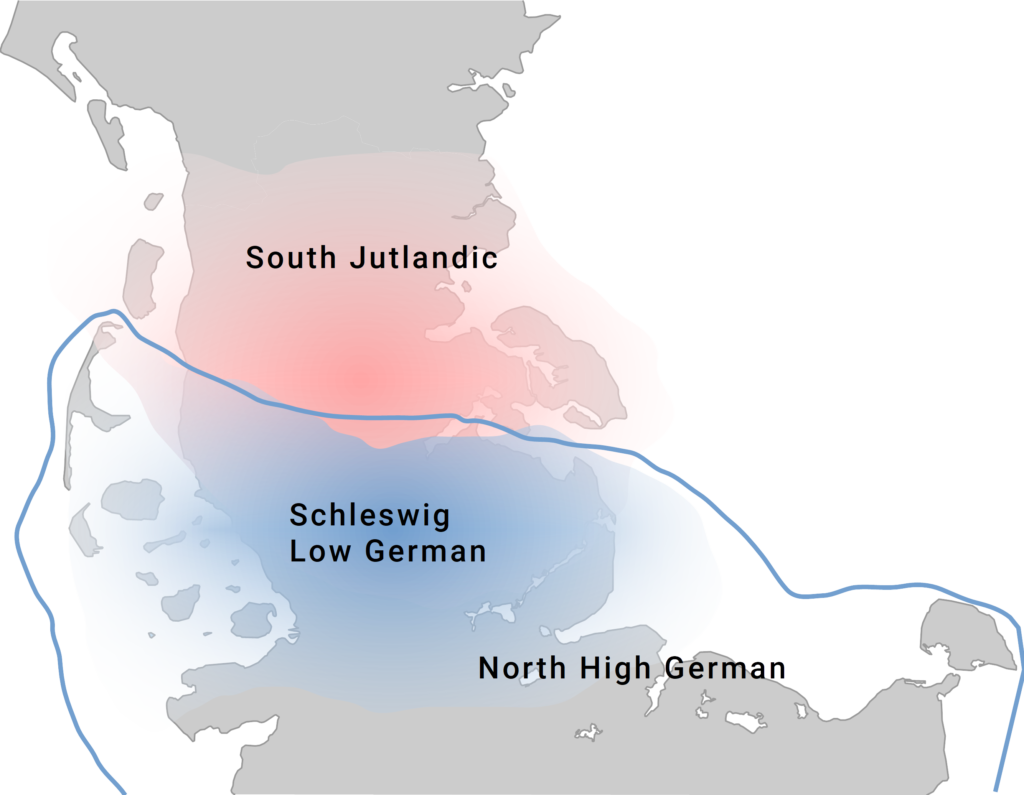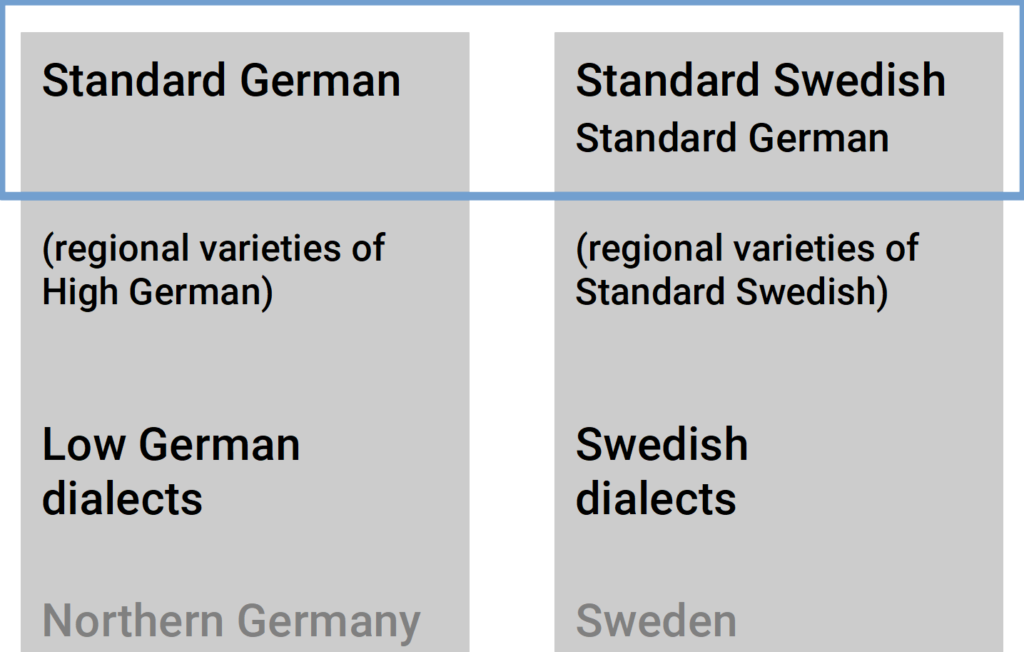Language contact and areality
It is textbook knowledge (e.g. Braunmüller 2005) that the Continental Scandinavian languages were strongly influenced by contact with (Low) German (even if some issues are still disputed, and there are still gaps to fill). Similarly, it is well known that North German varieties have been influenced by Danish (but often only to specialists in a rather narrow field; e.g. Bock 1933). However, areal approaches to related contact phenomena have been rare, although it is obvious that contact-induced innovations, for example, have areal implications.
Areal patterns in language structure typically emerge from common inheritance, contact, or chance. It is often hard to tell these factors apart. The fact that languages are in contact with each other does not imply that everything they have in common is due to contact – if contact languages are genetically related to each other, then shared structures and even shared innovations may as well be a consequence of their common ancestry. Similar structures may also evolve independently in geographically adjacent languages (probably in line with general tendencies in language change). Conversely, the fact that cross-linguistic similarities in neighbouring languages can have arisen independently of language contact does not imply that this is actually the case.
Traditionally, however, structural innovations have often been attributed to either language-internal or language-external factors, and there has usually been a tendency to favour internal over external explanations. Today’s contact linguistics, in contrast, emphasizes that multicausality is the rule, not the exception: More often than not, language contact facilitates innovations that would not at all be unthinkable outside the contact situation rather than triggering otherwise unimaginable innovations. Consequently, studying of the emergence of areal patterns means tackling the actuation problem: What causes a particular change in some language(s) to happen in a specific region, within a specific community, at a specific time, while it does not occur in other varieties of the same language(s)?
References
- Bock, Karl N. 1933. Niederdeutsch auf dänischem Substrat. Studien zur Dialektgeographie Südostschleswigs (Deutsche Dialektgeographie 34). København: Levin & Munksgaard.
- Braunmüller, Kurt. 2005. Language contacts in the Late Middle Ages and in Early Modern Times. In Oskar Bandle et al (eds.), The Nordic languages. An international handbook of the history of the North Germanic languages (Handbooks of Linguistics and Communication Science 22), vol. 2, 1222–1233. Berlin: de Gruyter.
Variation-sensitive areal typology
GrammArNord follows an approach called variation-sensitive areal typology (Höder 2016), basically a combination of dialectology, areal typology, and contact linguistics. There is no language contact without variety contact, but variety contact can be restricted to individual varieties of different languages. In particular, it is likely to be restricted to non-standard varieties. For example, German-Danish bilinguals on the Cimbrian Peninsula, up to the 19th century at least, typically used traditional dialects or regional vernaculars of the two languages, without necessarily being competent in the standard varieties. Conversely, most members of today’s Danish minority in Schleswig use a regional variety of High German along with South Schleswig Danish (the minority variety), without speaking a traditional dialect of either language.
Cross-linguistic areality is conceptualized as involving contiguous regions in multilingual communicative space, which in turn is defined by geotemporal and non-geographic dimensions (reflecting social stratification, situational differences, and the like). Contact-induced innovations involving neighbours in communicative space are likely to be reflected in areal patterns in communicative space.
In this sense, Schleswig Low German and North High German are neighbours because they occupy overlapping or adjacent regions in communicative space (i.e. they are used by the same community in the same area in informal contexts), and we would expect areal patterns to show up (e.g. as a result of the use of originally Low German features in regional High German). For the same reason, South Jutlandic and Low German dialects have historically been neighbours (i.e. they were used by overlapping or neighbouring communities in adjacent geographic areas), and we would expect areal patterns that involve dialects on both sides.

On the other hand, Standard German and Standard Swedish have historically been neighbours as well, as both were used by cultural elite groups in the Swedish-speaking countries. As a consequence, we would expect features of Standard German to appear in Standard Swedish, but not necessarily in non-standard varieties of Swedish.

References
- Höder, Steffen. 2016. Niederdeutsch und Nordeuropa: Eine Annäherung an grammatische Arealität im Norden Europas. Niederdeutsches Jahrbuch 139, 103–129.